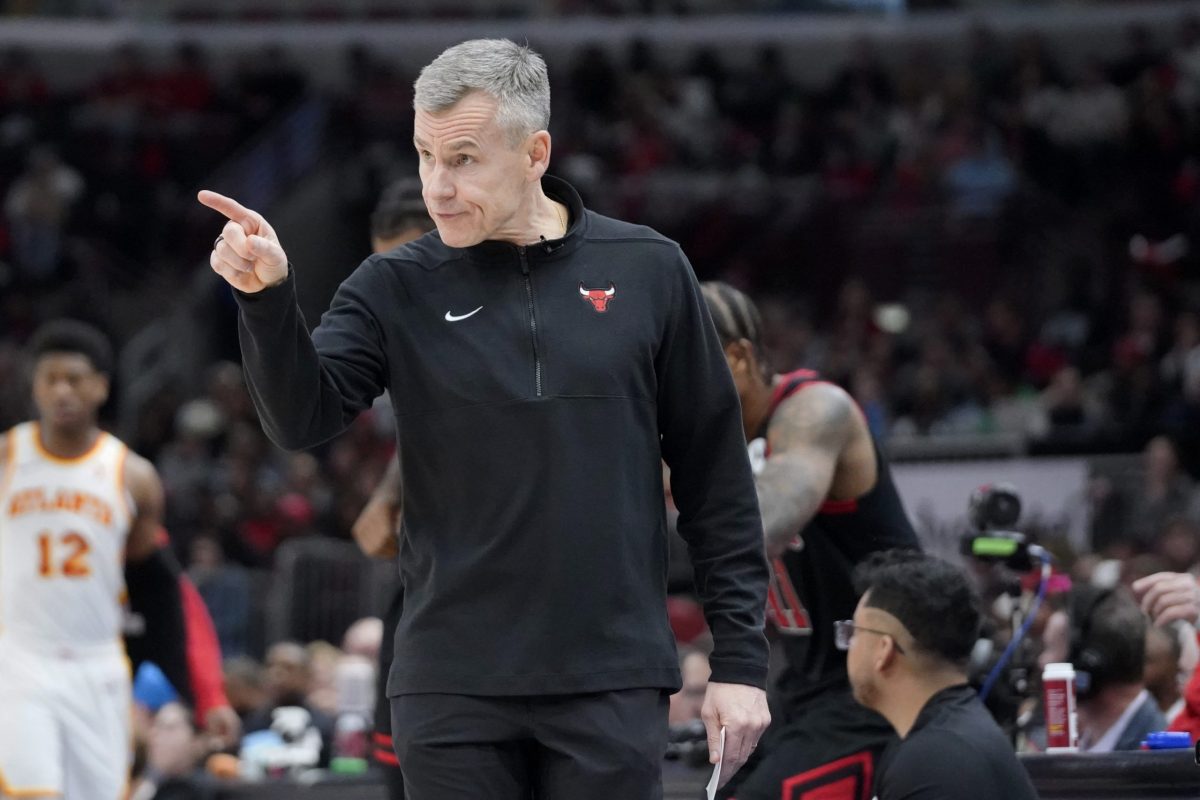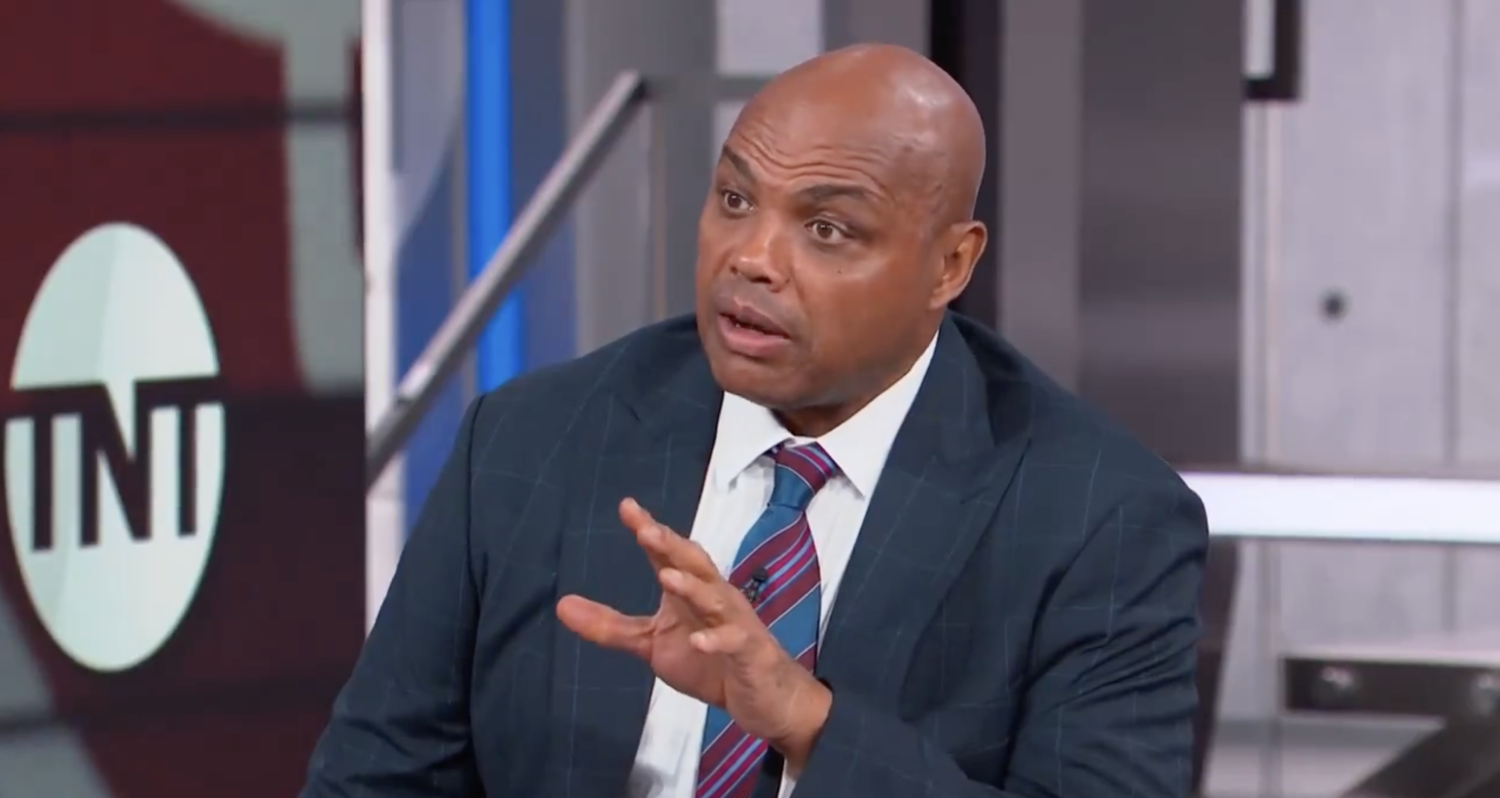Back in February, writer/director/producer Michael D. Ratner and his OBB Pictures company debuted a new series, Cold As Balls (in conjunction with Hart’s Laugh Out Loud Network), featuring 8-10 minute episodes with Kevin Hart interviewing different athletes and celebrities while both interviewer and interviewee were sitting in cold tubs. That series blew up; by March, its episodes were averaging 5 million views each on YouTube, with the premiere (Hart and LaVar Ball) posting 8.3 million (it now has 10.9 million), and two more seasons were announced.
Season 2 is now here, with Ratner again serving as director and executive producer, and the first episode (with Hart and Lamar Odom) debuting Tuesday. Ratner took the time to speak with Awful Announcing last week about the reception to the show, what’s changed for the new season, and what to expect from him and OBB going forward. First, though, here’s that episode:
Ratner told Awful Announcing he knew they had something good with the first season, but he was blown away by just how much of an audience it drew.
“I was hopeful, but no, I didn’t expect it to become, like, the biggest show on the internet. I knew obviously that Kevin had a massive fanbase and huge personal distribution channels with, you know, like 65 million Instagram followers and quite an online voice and presence. But it definitely was shocking in a good way when it did as well as it did, and you’d see an episode released and there were like a million views in an hour which climbed to six, seven, eight million in a day, and those are better than broadcast numbers. It’s kind of crazy when you think ‘Here’s something we’re editing one day in a house at OBB and this is doing more eyeballs than basically any other piece of content, period.’ So it exceeded expectations, but I felt we had a really cool recipe with athletes and a big Hollywood star, but it definitely did better than I would have thought.”
Ratner said Hart’s sense of humor, improv ability and ability to relate to his interviewees particularly help the show stand out.
“He’s the major component. We’ll go and we’ll write out the general premise and have a road map and a blueprint for what should happen in that episode and script that out, but Kevin is unbelievable at improv, and he really does know sports, so he’s able to really go and take it to the next level. And he also has the personal touch. I think the reason these are conversations more than interviews is he has these relationships that preexist. A quick green room catchup meeting with the athlete, and he’s able to go and get them talking about stuff that they wouldn’t be talking about on maybe SportsCenter.”
Ratner said the show’s short episodes, focus on in-the-headlines athletes and celebrities, and willingness to embrace zaniness helped as well.
“We’re topical, so you’ve got really relevant big stars, everybody loves sports. You’ve got arguably the biggest movie star out right now. And then I think we created a format that’s really fun and unique. The new modern “win” as far as a TV hit can come on a super small screen on a phone, it can be a 10-minute format show, an interview show like this, that hits wildfire and is the new big thing. You’ve seen Hot Ones blow up, you’ve seen Between Two Ferns a few years back when it was really big, I think this was next in line.”
“And we took this, let’s call it 10-15 minute format interview show, and really went and did the work to highly produce it and have a bit of an ensemble cast, between the two ice boys, who are now characters moving forward because we went and saw that fans loved the engagement with Kevin and those characters and the athletes, so we went and gave them bigger roles as we move forward into season two. Then you’ve got White Hand, who’s this weird character Kevin coined in Season 1 and now he’s a whole part of our set and cast. Why did it work? It was the perfect storm.”
Interviewing athletes and celebrities in cold tubs is a very different spin on the usual interview show, too, and Ratner said he thinks those surroundings help make the interviews more interesting.
“Any time you put somebody in somewhat of an uncomfortable situation, you get diarrhea of the mouth. [With Hot Ones], you’ve got the wings on fire and then they start blurting out shit and it’s really fun. Here, you’ve got a cold tub and the athletes do it all the time, so maybe they’re just comfortable chilling, but maybe they’re in a bit of a zone, so they start speaking. And then you’ve got Kevin, who traditionally obviously is an actor, he’s not in cold tubs, so he’s sort of freaking out and being honest. And it’s constantly escalating; as it gets colder and colder throughout the episode, people just start, you know, talking. I think you put them in a somewhat uncomfortable situation and get really good stuff. The elements make it really fun and different and competitive and informative while also being super funny throughout.”
He said a big part of the preparation for Season Two involved finding what fans liked and providing more of that.
“We catered to having perfect analytics. We went through YouTube comments, Twitter, what people liked, moments that they loved in Season 1, we built on that. So I think we created something that has these super-shareable viral moments. It’s when you get the Daquans or the FuckJerrys of the world to organically post this stuff that you’re in the zeitgeist, and you’re creating something that people want to share, and it does ultimately go viral. By looking at the show in moments and shareability and having all those other key elements, we created something that just hit.”
Ratner said that’s a huge advantage of creating a digital show versus a TV one.
“If you put out a show for some other network, you don’t know exactly what worked. It’s hard to track. There’s something really nice about putting something out on the internet where you can go and look. The internet, you’re totally anonymous, right, so if 500 say the same thing on the internet and none of them know they’re going to comment, they’re just speaking anonymously under some name, most likely that is how they feel. And if a lot of people say that worked, or if someone dropped off at a certain point and wasn’t so into something, that probably didn’t work. If this episode got the least amount of views and we hear it was because of X, Y, Z, we probably drop those things out. So I think it’s really listening to the fans.”
He said the passion Cold As Balls fans have for the show makes that kind of listening worthwhile, too.
“The show has real fans. I was blown away by the amount of fan-created reaction videos. There’s hundreds of videos online where you can watch people reacting to the videos, going through them. I don’t watch all of those, but we go, and we can take note, like if someone liked White Hand slapping Kevin or putting a thumbs-up or their conversations, and that’s got, I don’t know, 3,4,5,000 thumbs up on one comment, someone just putting things in quotes, it’s like ‘All right, that worked. People like hearing about that part, or about the sports, or the family.’ Seriously, that’s a really cool piece of research to have and we definitely did more of those things. We increased the role of the ice boys and White Hand, to the point where I look at the show like, there’s a clear lead, but it’s an ensemble cast. You’ve got two ice boys on the side, you’ve got your guest, you’ve got White Hand, and then you’ve got our set. And I think that’s what makes this really, really cool; we’ve got a lot of layers.”
The latest
“It’s one of the most exciting things we’ve got going on right now. Jay Longino wrote just an unbelievable script, and he did Uncle Drew, he just had an announcement out about a Netflix film, he’s a fantastic writer, a good friend of mine and the company’s. And we have a pretty good attachment there and we’re going to take that out [to networks], and my expectation is that that will be watchable to the masses in the not-too-distant future. It’s a phenomenal script, it’s such a rich story, the world of 90s sports gambling before offshore accounts, and the many layers, some of which are quite dark. But we’re also taking a bit of a comedic spin to it as well. Really, really riveting, and that’s a really good dramedy for us that we’re really excited about. We’re in deep, deep development and finally have a script that everyone’s happy with and we’ll be taking that out shortly.”
And this is far from Ratner’s first venture into the sports world. In 2016, he directed the 30 for 30 short “Gonzo At The Derby” on Hunter S. Thompson and Ralph Steadman’s famed trip to the 1970 Kentucky Derby. Ratner said that project is still one of his favorites, and it was key to putting OBB on the map.
“The newest piece of art in my office is a profile shot of Hunter S. Thompson. That was such an integral piece of our journey. And our motion graphic actually has some of [Ralph] Steadman’s ink splatters and stuff like that, because that’s always been just a really important part of our story. I think gonzo journalism and Hunter and all that stuff was such a cool experience, and to align with the 30 for 30 brand, which has such a cache. That was one of the first things I did as a writer/director/producer through OBB that got a lot of attention, it was at the Tribeca Film Festival. So that movie to me was great.”
He said after that he wanted to branch away from sports and expand his portfolio, but now he’s excited to get back to making more sports content.
“For me a bit after that, I didn’t want to get typecast as just a sports creator, so I went and started the comedy business and the music business. And we’re doing a feature film on Jeezy right now and we’ve got a comedy show that we’re about to launch, a Netflix original. And I wanted to diversify the portfolio, because I love sports, but I wanted to make sure we had our hand in a lot of places before people say ‘No, you only do this one thing.’ So now that we have all those other projects going, I go back to the roots of ‘What else can we be doing in sports?’ because those other things will be there.”
Ratner said sports documentaries are going to be a key focus for OBB going forward.
“Sports business to me is huge, and doing premium docs are of major interest. I’m interested in two different types at the moment. Obviously, 30 for 30 types where it’s a retrospective, looking back at a time period where you have a completed story. I’m also interested in the new world of premium doc follow where things are happening in real time. So there’s a few projects we’re circling at the moment in that vein. And I think those are cool because the technology’s caught up to where you can shoot that stuff and have it out in such real time. And I think there’s something pretty cool about watching something highly produced…that style to me of just premium, real time, polished episodic content in the sports world is really cool and really interesting, and something you’ll be seeing a lot more of from us. “







